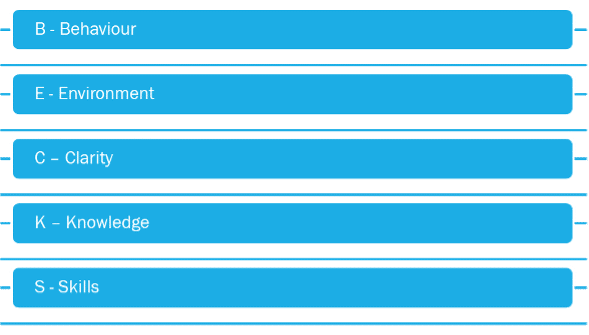
Valerie Amie and Giles Kingsley-Pallant, PCC associates, describe how to use the BECKS model to deal with the dynamics of your team
Environment or ‘what we are working with’
Here’s another scenario. In some localities, in order for referrals to be processed through choose-and-book, the administrative team need the patient’s BMI recorded on the referral form generated by the GP. Unfortunately, it’s not always recorded at the point when the GP sees the patient and this can result in the hospital rejecting the referral.

So, the administrative lead, Sarah, goes in to see the GP and says, “I’m really sorry, but you haven’t filled in this box here for the BMI. Would you mind filling it in?” The GP, very keen to do the right thing, says “Yes. No problem at all.” Sarah goes back into the admin office where she bumps into the practice manager. The practice manager is annoyed, pointing out they have had 10 rejected referrals. “Yes, yes, I know that.” says Sarah. “Well, have you thought of telling the GPs?” the practice manager asks. Sarah feels exasperated and replies, “Well yes. I have told them repeatedly until I am blue in the face.”
We can keep asking the same thing, and we can keep failing to get the response we need, and we can keep getting cross with other team members – or we can try and understand where the problem lies; the question is, ‘What is breaking down in this situation?’
The system the GP uses does not automatically flag up the BMI, or prompt for height and weight to be recorded, so this information is not readily to hand when the referral request is raised – but there is a relatively simple solution. By using the technology available you can create a form that auto extracts from the patient record the height and weight data to generate the BMI on the referral form. If the data is not there you can also design into the process a flag to alert the GP of the need to capture the patient’s height and weight before s/he leaves the building.
There are a lot of things that work against us in the environment we work in and, combined with lack of clarity, knowledge and skills, this can increase stress, undermine performance and lead to people feeling like they are not part of a team.
This leaves you with behaviour
Behaviour in the BECKS models really looks at recalcitrant behaviour – where people absolutely don’t want to do something, and ‘Come to work, not to work’. It provides a constructive framework which you can use to check that you are supporting individuals to change. By noticing difficult behaviours around change, or just within day-to-day working, you can be aware of how the environment, clarity, knowledge and skills may be impacting the individual.
The BECKS model is an effective way of supporting teams to change within a safe non-judgemental process.
Valerie Amie and Giles Kingsley-Pallant are PCC associates. PCC can work alongside practices to implement changes successfully, and embed learning and skills along the way. Contact [email protected] for more information.

Be the first to comment